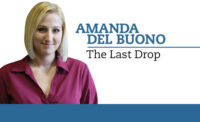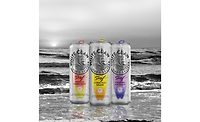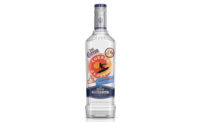CSDs Surf Through Rough Waters
For the First Time in two Decades, the Number of Soda Cases Sold in the United States Declined. in 2005, Case Volume was Down 0.7 Percent to 10.2 Billion Cases.
Category volume dropped 3.9 percent in combined
channels, with Coca-Cola falling 4.2 percent, Pepsi-Cola sinking 4.7
percent and Cadbury Schweppes dipping 1.2 percent. Even flagship diet
brands took a hit, with Diet Coke’s volume tumbling 5 percent in the
combined retail channels and Diet Pepsi’s volume declining nearly the
same at 4.7 percent.
Globally, both the Coca-Cola brand and Sprite recorded
their highest growth rates in five years, Coca-Cola’s annual report
says. For the first quarter of 2006, Coca-Cola was on track to deliver its
long-term growth targets, says Neville Isdell, chairman and chief executive
officer. “Spurred by innovation and execution in key markets and
increasing success in stabilizing some challenging ones, we effectively
balanced results across our global operations to deliver 5 percent volume
growth – 3 percent in carbonated and 11 percent in noncarbonated
beverages – ahead of our long-term target,” he says.
“Strong growth in our Latin America group and our other emerging
markets, along with another solid quarter in North America, is helping to
drive our business.”
| Global carbonate volume (MILLIONS OF LITERS) | ||
| SUBSECTOR | 2005 | FORECAST 2006 |
| COLA CARBONATES | 108,733.4 | 110,697.4 |
| NON-COLA CARBONATES | 79,257.5 | 80,747.7 |
| TOTAL | 187,990.9 | 191,445.1 |
| Source: Euromonitor International, 2006 | ||
Key brands drove the 3 percent unit case volume
increase, with Coca-Cola, Sprite and Fanta growing unit case volume 3, 5
and 2 percent, respectively, in the quarter. Unit case volume growth in
North America in the first quarter for carbonated beverages was positive.
Unit case volume of diets and lights increased 2 percent in the quarter as
continued success of Coca-Cola Zero and Diet Coke Sweetened with Splenda
led to segment share gains, the company reports. Innovation continued in
the quarter, contributing to unit case volume growth with the introduction
of Coca-Cola Black Cherry Vanilla, Tab Energy and Vault and the expansion
of Full Throttle.
An introduction of a different sort, the company
relaunched Sprite in May with a new advertising campaign focusing on the brand’s “Lymon” taste and the first
packaging update since the early ‘90s. The new package design
features the familiar silver, green and blue color and the Sprite brand
name with bubbles. The updated imagery is enhanced by the inclusion of a
new “S” brand icon.
In 2005, volume at PepsiCo Beverages North America
grew 10 percent because of increases in Gatorade, Aquafina and Propel
fitness water. Sales of diet carbonated soft drinks rose slightly,
offsetting a slight decline in sales of regular soft drinks.
For the first quarter of 2006, volume grew 5 percent
for PepsiCo Beverages North America, with the division’s
noncarbonated beverage portfolio increasing 18 percent and carbonated soft
drinks declining 1 percent. The decline in CSD volume reflects a
low-single-digit decline in Pepsi offset somewhat by a low-single-digit
increase in Mountain Dew and a slight increase in Sierra Mist, the company
says. Across the brands, both regular and diet CSDs experienced low
single-digit declines.
| Soft drink volume by company | |||
| Brand | % change vs. prior year | Market Share | % change vs.prior year |
| COCA-COLA | -4.2 | 35.7 | -0.1 |
| PEPSI-COLA | -4.7 | 34.7 | -0.3 |
| CADBURY SCHWEPPES | -1.2 | 17.6 | 0.5 |
| CATEGORY TOTAL | -3.9 | 100.0 | 0.0 |
| * ALL CHANNELS, Excluding Wal-Mart Source: Information Resources Inc./ACNielsen; full-year 2005 | |||
Pepsi-Cola’s Mountain Dew line now includes a
revamped Diet Mountain Dew with a new taste featuring a blend of sweeteners
including aspartame, sucralose and ace-k. The first change to Diet
Dew’s formula in 15 years, PepsiCo distributed more than 3 million
cans of the new diet in one day, making it the largest single-day sampling
effort in the company’s history.
During a year in which Cadbury Schweppes sold its
European beverage business for $2.2 billion, the confectionery/beverage
company still made carbonated soft drinks a priority in 2005. Beverage
sales rose 6.2 percent, and Cadbury Schweppes said it increased its market
share in the United States to 17 percent, largely due to the introduction
of Cherry Vanilla Dr Pepper.
| Top soft drink brands by volume | |||
| SHARE % CHANGE | % CHANGE VS. MARKET COMPANY PRIOR YEAR | MARKET SHARE | |
| COCA-COLA CLASSIC | -6.2 | 13.6 | -0.3 |
| PEPSI-COLA | -6.7 | 12.2 | -0.4 |
| DIET COKE | -5.0 | 7.5 | -0.1 |
| MOUNTAIN DEW | -2.0 | 6.5 | 0.1 |
| DIET PEPSI | -4.7 | 5.7 | 0.0 |
| PRIVATE LABEL FLAVORS | -4.5 | 5.3 | 0.0 |
| SPRITE | -3.7 | 5.1 | 0.0 |
| DR PEPPER | -3.7 | 4.6 | 0.0 |
| CAFFEINE-FREE DIET COKE | -8.4 | 2.4 | -0.1 |
| PRIVATE LABEL COLAS | -6.9 | 2.4 | -0.1 |
| * ALL CHANNELS, Excluding Wal-Mart Source: Information Resources Inc./ACNielsen; full-year 2005 | |||
In April, Cadbury Schweppes Americas Beverages agreed to buy a 53 percent stake in Dr Pepper/
Seven Up Bottling Group from The Carlyle Group for $334 million. Following
completion, the company intends to purchase the remaining equity in Dr
Pepper/Seven Up Bottling Group in respect to shares held by management and
employee share options, for an additional $19 million. The purchases will
increase the company’s share of the bottling group from 45 percent to
100 percent.
In CSDs, strong growth is being driven by good
performances from Dr Pepper and by other flavor brands such as Sunkist and
A&W, the company reports so far for 2006.
The No. 3 soft drink group in the United States
behind Coca-Cola and PepsiCo Inc., Cadbury Schweppes benefited from
flavored line extensions and advanced its lines with reformulations. Cherry
Vanilla Dr Pepper and its diet version, which launched in 2004 in select
markets and rolled out nationwide in 2005, received a marketing push from
Cadbury Schweppes in 2005. The company also added to its classic soda line
with the launch of Berries & Cream Dr Pepper and Diet Berries &
Cream Dr Pepper in April. Additionally launching in April, 7 UP
underwent a reformulation with an improved lemon lime flavor and all
natural ingredients, and now will be rebranded 7 UP, “now 100 percent
natural.”
All the ingredients in 7
UP now come from natural sources, and artificial ingredients, such as the
artificial flavor preservative, calcium disodium EDTA, have been removed.
The food industry watchdog group the Center for Science in the Public
Interest has threatened to sue Cadbury Schweppes over the all-natural
campaign. At issue is the use of high fructose corn syrup, which the group
claims is not a natural ingredient. The company responded by saying it was
“entirely confident in the accuracy” of the claim, and that
high fructose corn syrup is a natural ingredient made from corn and is
processed using similar methods to other natural foods and ingredients. BI



